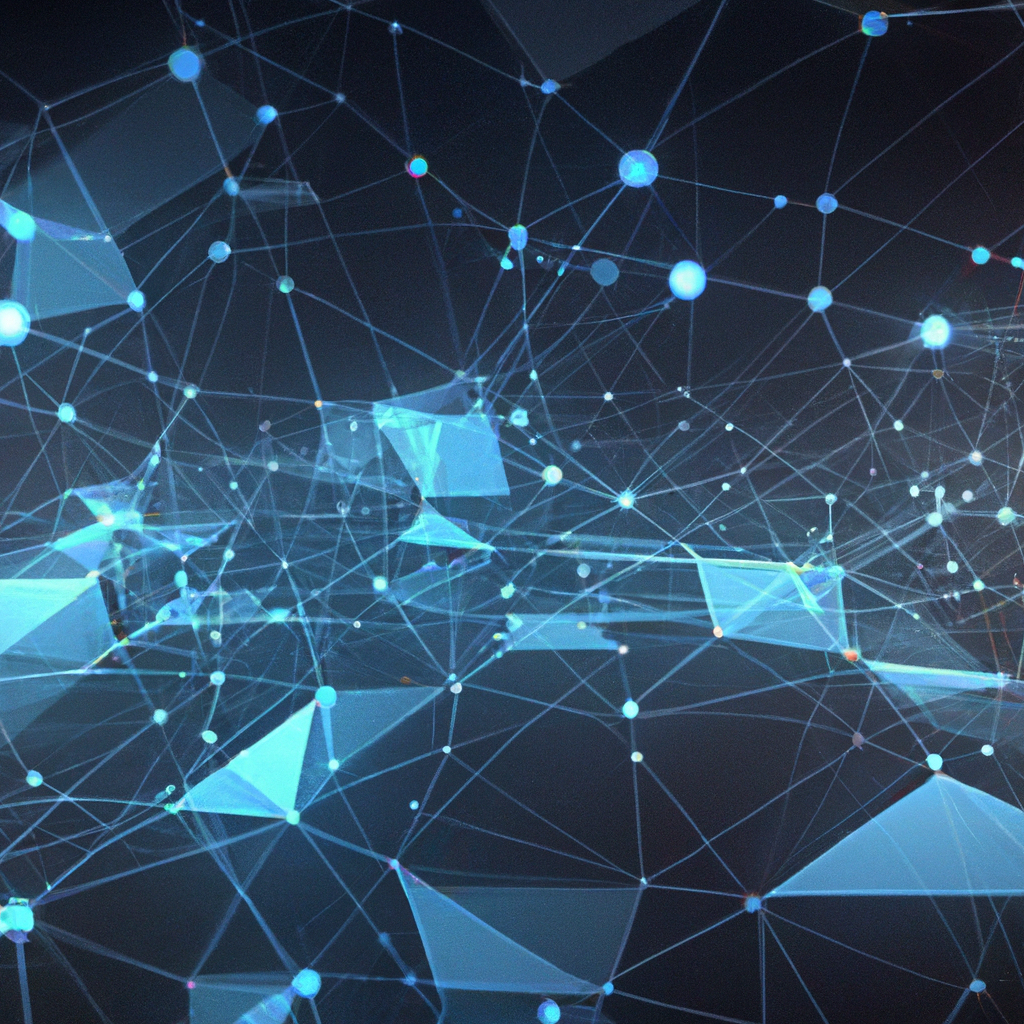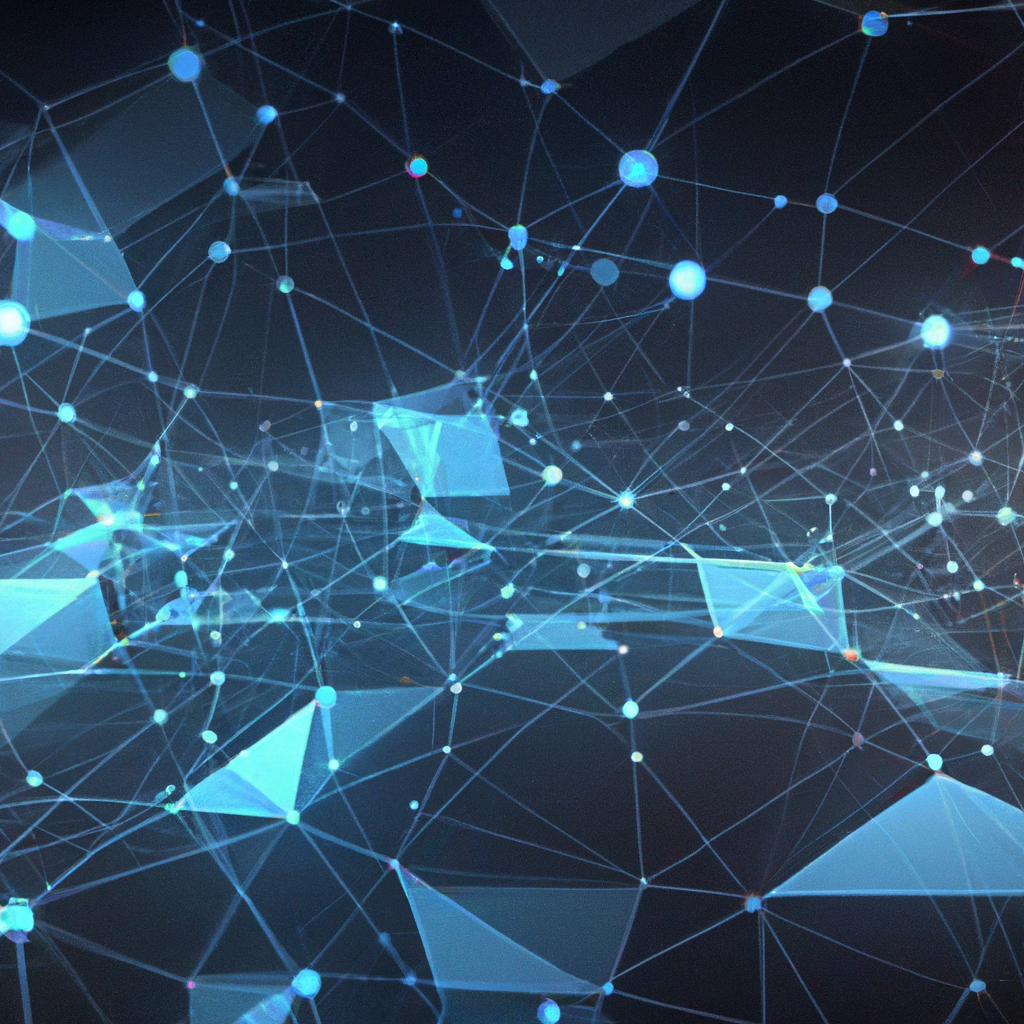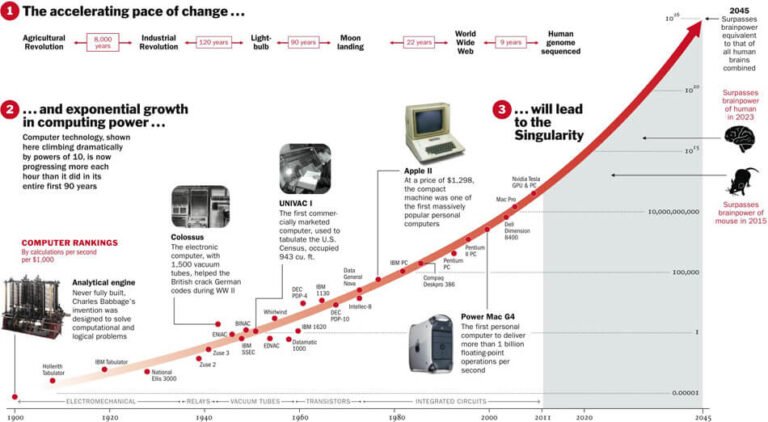The Future Of AI In The World

Imagine a world where machines are not just intelligent, but also capable of experiencing emotions, recognizing patterns, and exhibiting human-like behavior. This is the exciting future that AI holds for us. With rapid advancements in technology, AI is no longer just a concept from science fiction movies, but a reality that is transforming various industries and shaping our everyday lives. From healthcare to transportation, AI has the potential to revolutionize the way we live, work, and interact. In this article, we will explore the promising future of AI and the endless possibilities it brings to the world. Get ready to be amazed!

Impact of AI on Various Industries
AI in Healthcare
Artificial Intelligence (AI) has the potential to revolutionize healthcare by improving patient outcomes, increasing efficiency, and reducing costs. In the field of healthcare, AI can be used for various purposes, such as analyzing medical images, diagnosing diseases, predicting patient outcomes, and assisting in drug discovery. Machine learning algorithms can analyze vast amounts of medical data and identify patterns, helping doctors make more accurate diagnoses. AI-powered chatbots and virtual assistants can provide patients with personalized healthcare information and support. Overall, AI has the potential to enhance the quality of healthcare and improve patient care.
AI in Education
AI has the potential to transform education by personalizing learning experiences, providing adaptive tutoring, and automating administrative tasks. Intelligent tutoring systems can tailor educational content to each student’s individual needs, enhancing engagement and understanding. AI-powered chatbots can provide instant feedback and support, creating a more interactive and responsive learning environment. Additionally, AI can automate administrative tasks, such as grading and scheduling, allowing educators to allocate more time and resources to instruction. With AI in education, personalized and adaptive learning experiences can become the norm, revolutionizing the way we learn.
AI in Finance
The finance industry has witnessed significant advancements with the integration of AI. AI-powered algorithms can analyze vast amounts of financial data and make predictions about stock market trends, investment opportunities, and risk management. AI can automate routine tasks, such as document processing and data entry, reducing human error and increasing efficiency. Chatbots powered by AI can assist customers with financial queries and provide personalized financial advice. Machine learning algorithms can detect fraudulent activities and enhance security measures in financial transactions. With the use of AI, the finance industry can achieve greater accuracy, efficiency, and customer satisfaction.
AI in Manufacturing
AI is transforming the manufacturing industry by enabling automation, improving productivity, and ensuring product quality. Robots powered by AI can perform complex tasks with precision, speed, and consistency, reducing the need for human labor and minimizing errors. Machine learning algorithms can analyze and optimize production processes, improving efficiency and reducing waste. AI-powered sensors and predictive maintenance algorithms can detect and prevent machine failures, minimizing downtime and maximizing productivity. AI is also used in quality control, as computer vision systems can inspect products for defects and anomalies. As a result, AI is revolutionizing the manufacturing industry by streamlining operations, reducing costs, and improving product quality.
AI in Transportation
AI is reshaping the transportation industry by improving safety, efficiency, and sustainability. AI-powered systems can analyze real-time traffic data and optimize routing to minimize congestion and reduce travel time. Autonomous vehicles powered by AI can enhance road safety by eliminating human error and responding quickly to changing road conditions. AI algorithms can also optimize transportation logistics, reducing fuel consumption and carbon emissions. Additionally, AI can enhance public transportation systems by predicting passenger demand and optimizing routes and schedules. With the integration of AI, the transportation industry can become safer, more efficient, and more sustainable.
AI in Retail
AI is revolutionizing the retail industry by creating personalized shopping experiences, enhancing customer service, and optimizing inventory management. AI-powered recommendation systems can analyze customer preferences and purchase history to provide personalized product recommendations, increasing sales and customer satisfaction. Chatbots powered by AI can assist customers with their queries, provide instant support, and facilitate a seamless shopping experience. AI algorithms can optimize inventory management by predicting demand, reducing waste, and ensuring availability of popular products. With AI in retail, businesses can tailor their offerings to individual customers, provide exceptional service, and boost profitability.
AI in Agriculture
AI is transforming the agriculture industry by improving crop yield, reducing resource consumption, and enhancing sustainability. AI-powered systems can analyze data from sensors, drones, and satellites to monitor soil conditions, weather patterns, and crop growth, enabling farmers to make data-driven decisions. Machine learning algorithms can identify and predict crop diseases, pests, and nutrient deficiencies, allowing for timely interventions and improved yield. AI can also optimize irrigation systems, reducing water consumption and preserving resources. By leveraging AI, the agriculture industry can increase productivity, reduce environmental impact, and ensure food security.
AI in Entertainment
AI is reshaping the entertainment industry by enhancing content creation, personalizing experiences, and revolutionizing audience engagement. AI algorithms can analyze vast amounts of data, such as user preferences, viewing patterns, and social media interactions, to create personalized recommendations and curated playlists, improving user engagement and satisfaction. AI-powered systems can generate content, such as music or artwork, autonomously, unleashing creative possibilities. Virtual reality (VR) and augmented reality (AR) technologies, powered by AI, can provide immersive and interactive entertainment experiences. With AI in entertainment, the industry can deliver personalized, innovative, and captivating content.
AI in Customer Service
AI is transforming customer service by providing instant support, personalized recommendations, and efficient issue resolution. Chatbots powered by AI can handle customer inquiries, provide 24/7 assistance, and resolve simple issues, saving time and improving customer satisfaction. AI-powered algorithms can analyze customer data to provide personalized product recommendations and tailor marketing campaigns to individual preferences. Additionally, AI can automate customer service workflows, increasing efficiency and reducing costs. By integrating AI into customer service, businesses can enhance customer experiences, build loyalty, and improve brand reputation.
AI in Marketing
AI is revolutionizing marketing by enabling data-driven insights, targeting precise audiences, and automating campaign optimization. AI algorithms can analyze large datasets and identify valuable insights about consumer behavior, preferences, and purchasing patterns, empowering marketers to make informed decisions. AI-powered systems can target specific audiences with personalized advertisements, increasing conversion rates and return on investment. Additionally, AI can automate the optimization of marketing campaigns, adjusting strategies based on real-time data to maximize results. With AI in marketing, businesses can reach the right audience, deliver relevant messages, and achieve marketing success.
Ethical Considerations in AI Development and Use
Data Privacy and Security
As AI relies heavily on data, ensuring data privacy and security is crucial. It is essential to establish robust data protection measures to prevent unauthorized access, breaches, and misuse of personal information. Implementing strong encryption, anonymization techniques, and secure data storage protocols can help safeguard data privacy. Organizations should also be transparent about data collection practices and obtain informed consent from individuals. Additionally, regulations and standards should be in place to govern data usage and minimize the risk of privacy violations.
Bias and Fairness
AI algorithms can be prone to biases, reflecting the bias present in the data they are trained on. It is essential to address these biases to ensure fairness and prevent discrimination. Developing diverse and inclusive datasets can help reduce biases in AI algorithms. Regular monitoring and auditing of AI systems can also identify and rectify any biases that arise. Ethical guidelines should be established to promote fairness and prevent discrimination in AI development and use.
Unemployment and Job Displacement
The widespread adoption of AI may lead to job displacement and unemployment in certain sectors. It is crucial to anticipate and mitigate these effects through re-skilling and up-skilling programs. Governments, organizations, and educational institutions should collaborate to provide training and support for individuals whose jobs are affected by AI. By preparing the workforce for the changes brought by AI, society can ensure a smooth transition and mitigate the negative impact on employment.
Value Alignment
Ensuring that AI systems align with human values and societal standards is essential. It is crucial to define ethical guidelines and principles that guide the development and use of AI. These guidelines should prioritize human well-being, fairness, transparency, and accountability. By aligning AI with human values, we can establish trust, mitigate risks, and promote responsible AI deployment.
Autonomous Weapons
The development and use of autonomous weapons raise ethical concerns and the potential for misuse. It is crucial to establish clear regulations and international norms to prevent the development and deployment of autonomous weapons that can operate without human control. Encouraging dialogue and cooperation among nations can help address concerns related to the ethical implications and potential risks associated with autonomous weapons.
Superintelligence
The development of superintelligent AI systems raises important ethical and existential questions. Ensuring that AI systems remain under human control and preventing the risks associated with highly advanced AI is a significant challenge. It is crucial to conduct research and establish safeguards to mitigate the risks and ensure that AI development aligns with human values and goals.
Transparency and Explainability
AI systems should be transparent, and their decision-making processes should be explainable. Users and stakeholders need to understand how AI systems arrive at their decisions. Techniques such as interpretable machine learning can provide insights into AI decision-making processes and help build trust and accountability. Developing standards and regulations that require transparency and explainability in AI systems is essential.
Responsibility and Accountability
Determining responsibility and accountability in the development and use of AI is a complex issue. Clear guidelines and frameworks should be established to allocate responsibility when AI systems cause harm or make unethical decisions. Stakeholders, including developers, organizations, and users, should be held accountable for the actions and outcomes of AI systems.
Robotic Rights
As AI technology advances, there is an ongoing debate about whether robots and AI systems should have rights. Ethical considerations should be taken into account when discussing the rights and treatment of AI systems. It is essential to establish a balance between responsible AI development and recognizing the rights and dignity of AI entities.
Human-AI Collaboration
Promoting collaboration between humans and AI is essential to maximize the benefits and minimize the risks associated with AI. It is crucial to develop frameworks and guidelines for effective human-AI collaboration. This includes determining the roles and responsibilities of humans and AI systems, ensuring clear communication and interaction, and providing training and support for individuals to work effectively with AI.

Technological Advances Driving AI
Machine Learning
Machine learning is a branch of AI that focuses on the development of algorithms that enable computers to learn and make predictions or decisions without explicit programming. Machine learning algorithms can analyze vast amounts of data, identify patterns, and make predictions or decisions based on those patterns. This technology powers various AI applications and is driving advancements in fields such as healthcare, finance, and transportation.
Natural Language Processing
Natural Language Processing (NLP) is a field of AI that focuses on the interaction between computers and human language. NLP algorithms enable computers to understand, interpret, and generate human language. This technology is used in applications such as chatbots, voice assistants, and language translation.
Computer Vision
Computer vision is an AI technology that enables computers to understand and interpret visual information from images or videos. Computer vision algorithms can analyze and interpret visual data, enabling applications such as facial recognition, object detection, and image classification. This technology is used in various industries, including healthcare, manufacturing, and transportation.
Robotics
Robotics combines AI and engineering to design and develop intelligent machines that can perform tasks autonomously or with human guidance. Robots powered by AI can perform complex tasks in various industries, such as manufacturing, healthcare, and agriculture. AI-powered robots can automate repetitive and dangerous tasks, enhance productivity, and improve efficiency.
Neural Networks
Neural networks are a type of machine learning algorithm that mimic the functioning of the human brain. These algorithms consist of interconnected layers of artificial neurons that enable the system to learn and make decisions. Neural networks are used in various AI applications, including image recognition, speech recognition, and natural language processing.
Quantum Computing
Quantum computing is a rapidly developing field that holds the potential to revolutionize AI. Quantum computers use quantum bits, or qubits, which can represent multiple states simultaneously, enabling them to perform complex calculations more efficiently than classical computers. Quantum computing has the potential to speed up AI algorithms, improve problem-solving capabilities, and enable the development of advanced AI systems.
Internet of Things (IoT)
The Internet of Things (IoT) refers to the network of interconnected physical devices embedded with sensors, software, and connectivity, enabling them to collect and exchange data. AI can be combined with IoT to analyze and interpret this data, enabling applications such as smart homes, smart cities, and smart manufacturing. AI-powered algorithms can process the vast amounts of data generated by IoT devices and derive meaningful insights.
Edge Computing
Edge computing refers to the practice of processing and analyzing data near the source, rather than sending it to a centralized cloud server. AI algorithms can be deployed at the edge, enabling real-time decision-making and reducing latency. Edge computing combined with AI is particularly useful in applications that require real-time processing, such as autonomous vehicles and industrial automation.
Augmented Reality (AR)
Augmented Reality (AR) is a technology that superimposes digital information, such as images or text, onto the user’s view of the real world. AI algorithms can analyze and process the visual information from AR applications, enabling real-time object recognition, tracking, and interaction. AR combined with AI has applications in fields such as gaming, training, and remote assistance.
Virtual Reality (VR)
Virtual Reality (VR) creates a simulated environment that users can interact with using specialized headsets or devices. AI algorithms can enhance VR experiences by generating realistic environments, simulating interactions, and providing intelligent responses. VR combined with AI has applications in fields such as entertainment, education, and training.
Challenges in AI Development and Adoption
Data Availability and Quality
AI algorithms rely on large amounts of data for training and decision-making. Availability and quality of data can pose challenges, particularly in industries where data collection is limited or access to relevant data is restricted. Ensuring data availability, quality, and diversity is crucial for developing robust AI systems.
Computational Power and Storage
AI algorithms can be computationally intensive and require substantial computational power and storage. Developing AI systems that can process and analyze massive amounts of data in real-time requires significant computational resources. Advances in hardware, such as high-performance GPUs and specialized AI chips, are addressing these challenges and enabling faster and more efficient AI processing.
Ethical and Regulatory Concerns
The ethical implications of AI, such as privacy, bias, and accountability, raise concerns that need to be addressed. Developing ethical guidelines and regulatory frameworks that govern AI development and use is crucial to ensure responsible and ethical AI deployment. Balancing innovation and regulation is a challenge that requires collaboration between policymakers, researchers, and industry stakeholders.
Lack of Skilled Workforce
The rapid advancement of AI has created a demand for skilled professionals who can develop, implement, and manage AI systems. However, there is a shortage of individuals with the necessary AI skills and expertise. Bridging the skills gap and providing training and education programs in AI is crucial to meet the growing demand and ensure the successful adoption of AI technologies.
Interoperability and Integration
Integrating AI systems with existing infrastructures, technologies, and processes can be challenging. AI systems need to be compatible with existing systems, databases, and APIs to enable seamless integration. Interoperability standards and frameworks should be established to facilitate the integration of AI systems with existing technologies.
Technical Limitations
AI technologies are still subject to technical limitations and constraints. For example, AI algorithms may struggle with explainability, making it difficult to understand and trust their decision-making processes. AI algorithms may also be sensitive to input variations, leading to inaccurate or biased outcomes. Ongoing research and development are essential to overcome these technical limitations and improve the robustness and reliability of AI systems.
Cost of Implementation
Developing and deploying AI systems can be costly, particularly for small and medium-sized enterprises. The infrastructure, hardware, and software required for AI can be expensive, limiting the accessibility of AI technologies to certain organizations. Addressing the cost barriers and providing affordable solutions and resources can promote broader adoption of AI technologies.
Acceptance and Trust
Building trust and gaining acceptance for AI technologies is crucial for their successful adoption. Addressing concerns related to privacy, security, bias, and job displacement is essential to build trust in AI systems. Educating and raising awareness among individuals and organizations about the benefits and limitations of AI can help foster acceptance and enable the widespread adoption of AI technologies.
Ethical Dilemmas
AI introduces ethical dilemmas that require careful consideration and decision-making. For example, determining how much autonomy to grant AI systems or addressing cases where AI decisions conflict with human values raises complex ethical questions. Developing ethical frameworks and guidelines to navigate these dilemmas is crucial for responsible AI development and use.
Unpredictability and Uncertainty
AI systems can exhibit unpredictable behavior, particularly in complex and dynamic environments. It is challenging to anticipate how AI systems will respond to novel situations or changes in input data. Addressing the unpredictability and uncertainty of AI systems is crucial to ensure their safe and reliable operation.
Applications of AI in Everyday Life
Virtual Personal Assistants
Virtual personal assistants, such as Apple’s Siri or Amazon’s Alexa, use AI algorithms to understand and respond to user queries and perform tasks such as setting reminders, making appointments, or providing personalized recommendations.
Smart Home Automation
AI-powered smart home systems can automate various tasks, such as controlling lighting, temperature, and security systems. These systems can learn from user preferences and adjust settings accordingly, providing convenience, energy efficiency, and improved home security.
Recommendation Systems
AI-powered recommendation systems are used in various applications, such as streaming platforms, e-commerce websites, and social media platforms. These systems analyze user preferences and behavior to provide personalized recommendations and suggestions.
Online Search and Advertising
Search engines, such as Google, use AI algorithms to understand user queries and provide relevant search results. AI is also used in online advertising to target specific audiences and optimize ad campaigns based on user behavior and preferences.
Fraud Detection and Prevention
AI algorithms can analyze large amounts of data and detect patterns indicative of fraudulent activities. These algorithms are used in various industries, such as finance, e-commerce, and cybersecurity, to identify and prevent fraud.
Cybersecurity
AI is used in cybersecurity to detect and respond to threats in real-time. AI algorithms can analyze network traffic, identify suspicious activities, and enhance the security of systems and data.
Smartphones and Wearable Devices
AI algorithms are embedded in smartphones and wearable devices, enabling features such as voice recognition, facial recognition, and activity tracking. These AI-powered capabilities enhance user experiences and provide personalized services.
Autonomous Vehicles
Autonomous vehicles, such as self-driving cars, rely on AI algorithms to perceive the environment, make decisions, and navigate safely. AI enables these vehicles to detect and respond to obstacles, follow traffic rules, and adapt to changing road conditions.
Smart Cities
AI technologies are used to create smart cities by optimizing transportation, energy consumption, and resource management. AI-powered systems can enhance traffic management, improve energy efficiency, and enable efficient resource allocation in urban areas.
Personalized Medicine
AI is used in healthcare to develop personalized treatment plans, predict patient outcomes, and analyze large amounts of medical data. AI algorithms can identify patterns and insights from medical data, leading to more accurate diagnoses and tailored treatment approaches.
Collaboration between Humans and AI
Augmentation of Human Capabilities
AI can enhance human capabilities by automating repetitive tasks and providing real-time insights and recommendations. By delegating mundane and time-consuming tasks to AI, humans can focus on higher-level decision-making and creative problem-solving.
Enhanced Decision Making
AI algorithms can process and analyze vast amounts of data, enabling humans to make more informed decisions. AI systems can provide real-time insights, predictions, and recommendations based on data analysis, improving the quality and accuracy of decision-making.
Improved Productivity
By automating routine tasks and workflows, AI can significantly improve productivity. AI-powered systems can handle data processing, documentation, and coordination, enabling humans to allocate more time and resources to complex and value-added tasks.
Automated Workflows
AI can streamline workflows by automating repetitive and manual tasks. AI-powered systems can handle data entry, document processing, and administrative tasks, reducing human error and increasing efficiency.
Human-AI Interaction
Effective communication and interaction between humans and AI systems are crucial for collaboration. Natural language processing and speech recognition technologies enable humans to interact with AI systems using voice commands and conversations, making the interaction more intuitive and seamless.
Skills and Training for Human-AI Collaboration
Developing the skills and knowledge required to collaborate effectively with AI is essential. Individuals need training and education programs that equip them with the skills to work alongside AI systems, interpret AI-generated insights, and make informed decisions based on AI recommendations.
Ethical Guidelines for Human-AI Collaboration
Establishing ethical guidelines and principles for human-AI collaboration is important to ensure responsible and accountable use of AI technologies. Guidelines should prioritize transparency, fairness, accountability, and human well-being in human-AI interactions.
Optimizing Task Allocation
Determining the optimal allocation of tasks between humans and AI systems is crucial for effective collaboration. It is important to identify tasks that are best suited for automation and those that require human judgment, creativity, and empathy to ensure an optimal division of labor.
AI and Socioeconomic Impact
Job Displacement and Job Creation
The widespread adoption of AI technologies may lead to job displacement in certain sectors as automation replaces certain tasks performed by humans. However, AI also has the potential to create new job opportunities by enhancing productivity, enabling innovation, and driving economic growth.
Re-skilling and Up-skilling
As AI reshapes the workforce, re-skilling and up-skilling programs become essential to prepare individuals for the changing job market. Training programs should focus on developing skills that are in demand in an AI-driven economy, such as data analysis, machine learning, and human-AI collaboration.
Income Inequality
AI has the potential to exacerbate income inequality if certain individuals or groups have limited access to AI technologies or lack the necessary skills to benefit from AI-driven opportunities. Ensuring equal access to AI technologies and investing in education and training programs can help mitigate income disparities.
Economic Productivity
AI has the potential to significantly enhance economic productivity by automating routine tasks, improving efficiency, and fostering innovation. AI-powered systems can optimize processes, reduce waste, and enable faster decision-making, leading to increased productivity and economic growth.
Job Market Trends
The job market is undergoing significant changes with the integration of AI technologies. Some roles may become obsolete, while new roles requiring AI skills and expertise emerge. It is important to monitor job market trends and anticipate the skills and knowledge that will be in demand in an AI-driven economy.
Social and Wealth Redistribution
AI has the potential to contribute to social and wealth redistribution by enabling access to services, opportunities, and resources. AI-powered systems can provide improved access to education, healthcare, and financial services, bridging social and economic gaps.
Access to AI Technology
Ensuring equal access to AI technologies is crucial to prevent further societal divides. Efforts should be made to provide affordable and accessible AI technologies to individuals, businesses, and communities, particularly in underserved areas.
Education and Digital Divide
AI technologies have the potential to exacerbate the digital divide if certain individuals or communities lack the necessary digital literacy skills or access to technology. Addressing the digital divide through education and infrastructure development is vital to ensure equal opportunities for all.
Ethical Implications on Society
The ethical implications of AI on society need to be carefully considered and addressed. Issues related to privacy, bias, accountability, and societal impact should be taken into account when developing and deploying AI technologies.
Quality of Life and Well-being
AI has the potential to significantly impact the quality of life and well-being of individuals. AI-powered technologies in healthcare, education, and other sectors can improve access to services, enhance efficiency, and provide personalized experiences, leading to improved well-being and quality of life.






